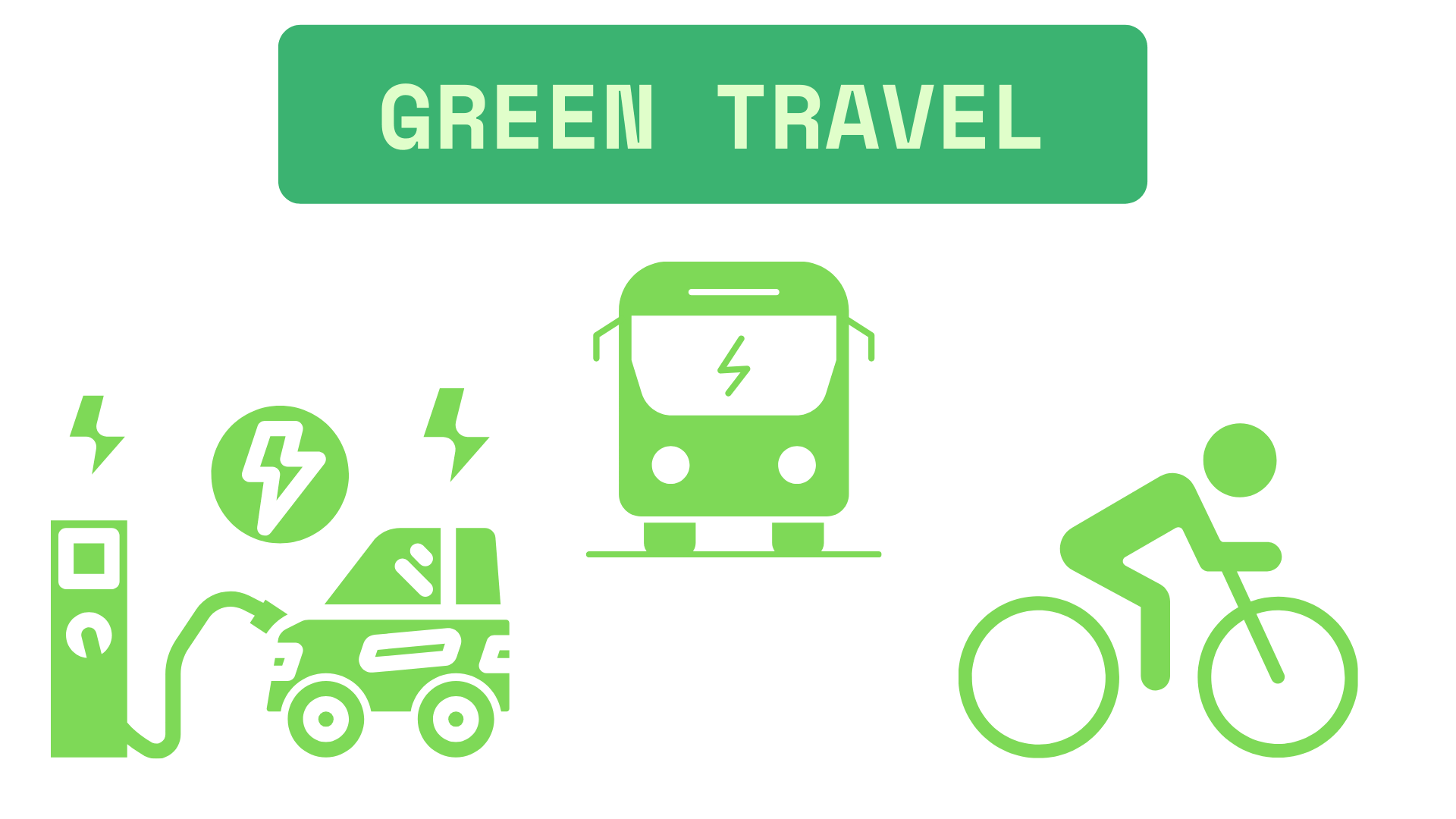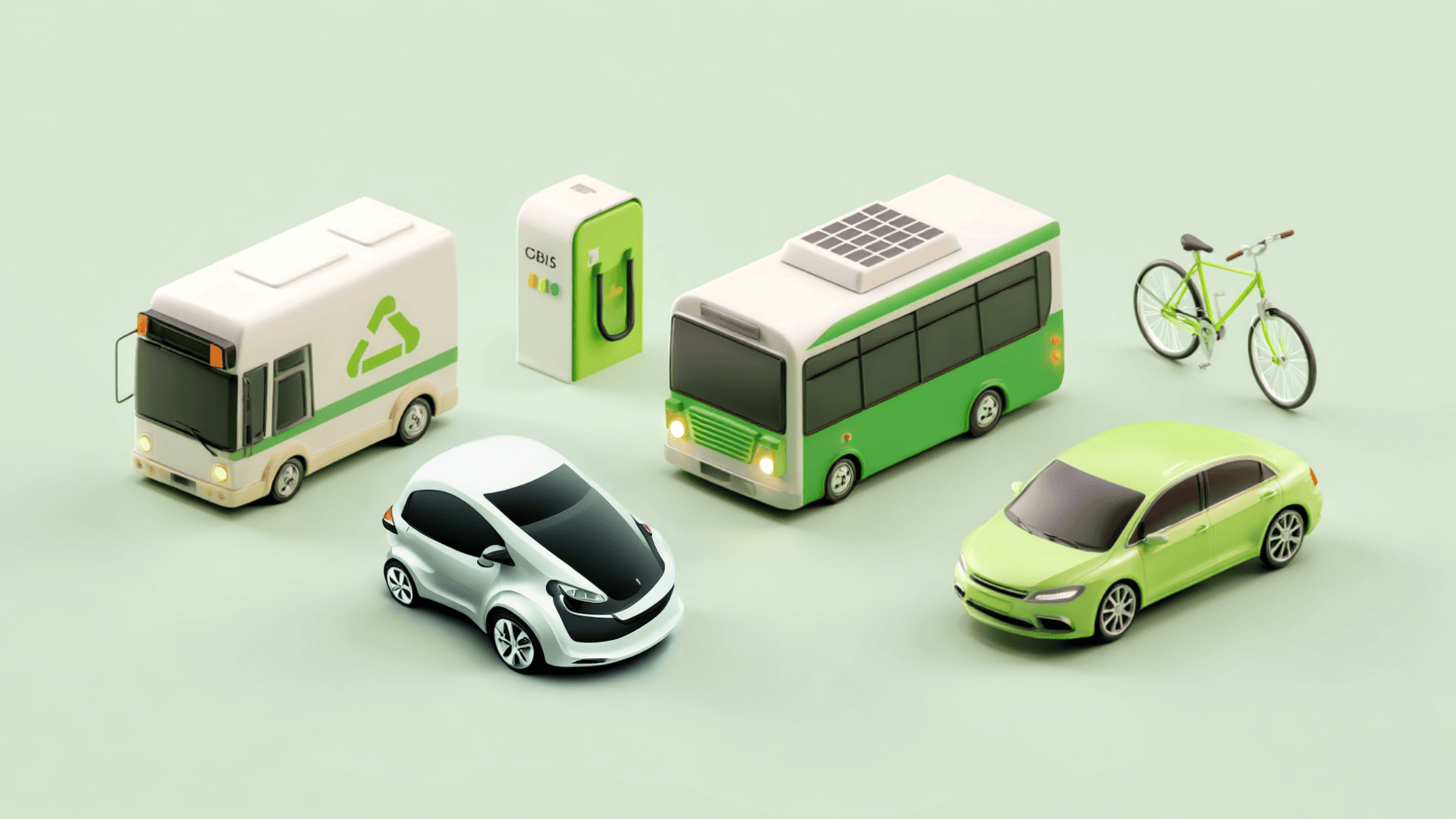Every day, millions of people travel to work, school, or leisure activities. The way we move, whether by car, bus, bike, or plane, shapes our environment.
Traditional transport systems rely heavily on fossil fuels, which release harmful gases into the air. These gases warm the planet, damage air quality, and affect human health.
This is where the idea of sustainable mobility comes in. Green travel and sustainable mobility trends are paving the way for eco-friendly transportation by focusing on systems that are efficient, safe, and environmentally friendly.
It combines technology, policy, and lifestyle changes to reduce pollution and build healthier, more livable cities.
In this blog, I will provide a general overview of sustainable mobility, including what it means, why it matters, the benefits it brings, the main trends shaping its future, and the challenges we face along the way.
What is Green Travel?

Green travel refers to selecting transportation options that minimize environmental harm. Instead of relying solely on gas-powered cars, it focuses on eco-friendly travel options that reduce emissions.
Driving electric vehicles (EVs) or hybrids and using public transit instead of driving alone, walking or biking for short trips, and taking trains instead of planes for medium-distance travel. These are a few options that involve green travel.
It’s also about making conscious choices, like carpooling or choosing direct flights to reduce fuel use, which helps protect the planet for future generations.
What is Sustainable Mobility?
Sustainable mobility refers to ways of moving people and goods that meet today’s needs without harming future generations. It balances environmental protection, economic growth, and social well-being.
In simple terms, it means using cleaner fuels and vehicles that release fewer emissions, encouraging eco-friendly travel options such as walking, cycling, and public transport, and designing cities that support greener lifestyles.
For example, Copenhagen and Amsterdam both invested in cycling lanes, resulting in a 20% decrease in car traffic and an improvement in air quality. This shows how daily habits can change when infrastructure supports sustainability.
Why Sustainable Mobility Matters
Transportation is a major driver of climate change, responsible for about 25% of global greenhouse gas emissions.
- Environmental Impact – cuts emissions, reduces fossil fuel use, slows global warming
- Health Benefits – lowers air pollution, reduces breathing and heart problems
- Economic Value – supports green jobs, lowers fuel expenses, reduces healthcare costs
- Long-Term Stability – helps achieve climate goals and builds stronger communities
Impact of Transportation on the Environment
The table highlights the contrast between traditional systems and sustainable options.
|
Environmental Issue |
Impact of Traditional Transport |
How Sustainable Mobility Helps |
|
Air Pollution |
Releases carbon monoxide, nitrogen oxides, and particles that harm lungs and ecosystems. |
Cleaner fuels and zero-emission vehicles reduce harmful pollutants. |
|
Greenhouse Gases |
Responsible for one-quarter of global CO₂ emissions. |
EVs, shared mobility, and active transport lower emissions. |
|
Land Use |
Highways and parking lots reduce green spaces and destroy habitats. |
Compact, transit-focused city planning saves land. |
|
Noise Pollution |
Traffic and aviation noise can impact both mental and physical health. |
Public transit, biking, and quieter EVs reduce noise levels. |
Core Principles of Sustainable Mobility
Sustainable mobility is built on five principles:
- Accessibility – Everyone should have access to affordable and safe transportation options, including those in rural or underserved areas.
- Efficiency – Energy and resources should be used wisely to reduce waste.
- Integration – Different transportation modes, such as buses, trains, and bicycles, should work together.
- Innovation – New technologies, such as electric vehicles, hydrogen fuels, and intelligent systems, should enhance mobility.
- Equity – Benefits of green transport must reach all communities, not just wealthy urban areas.
Key Trends in Sustainable Mobility

Sustainable mobility emphasizes the shift toward cleaner, brighter, and more efficient modes of travel that minimize environmental impact and will be achieved by:
1. Electric Vehicles (EVs)
Electric vehicles are one of the most visible symbols of sustainable mobility. They run on rechargeable batteries and produce zero tailpipe emissions, cutting down air pollution in cities.
Battery costs are falling, making EVs more affordable, and governments are offering incentives like tax credits and rebates. The global charging network is also expanding, with fast chargers reducing downtime for drivers.
Together, these factors are helping EVs move from niche to mainstream.
2. Public Transit Growth
Public transit remains the backbone of sustainable mobility. Buses, trains, and subways can carry far more people per trip compared to private cars, which lowers emissions per passenger.
Many systems are now being powered by renewable energy, making them even cleaner. Cities are investing in rapid transit lines and upgrading fleets with electric or hybrid buses.
Expanding transit networks also reduces traffic congestion and gives communities affordable, reliable mobility.
3. Shared Mobility
Shared mobility is transforming the way people perceive car ownership. Services like car-sharing, ride-hailing, and bike-sharing help reduce the number of private vehicles on the road.
Fewer cars mean lower congestion, reduced emissions, and less demand for parking spaces. These platforms also provide people with flexible access to transportation without the costs of ownership.
By combining shared mobility with public transit, cities can offer smarter, greener travel options.
4. Active Transportation
Active modes, such as walking and cycling, are central to building livable cities. They require no fuel, create zero emissions, and support healthier lifestyles.
Cities such as Paris, Amsterdam, and Copenhagen have redesigned streets with protected bike lanes, wider sidewalks, and traffic-free zones. These measures encourage people to leave cars behind for short trips.
Active transportation is cost-effective, community-friendly, and a powerful tool for reducing urban pollution.
5. Smart City Solutions
Technology plays a vital role in sustainable mobility. Smart traffic signals, powered by AI, can reduce idling and fuel consumption by adjusting to real-time traffic flow.
Apps provide live updates on bus and train arrivals, helping people plan their trips more effectively and encouraging the use of public transportation. Data collected from sensors also allows cities to predict traffic patterns and improve road safety.
Together, these tools make transportation more efficient while lowering emissions.
6. Alternative Fuels
Alternative fuels are key for sectors where full electrification is difficult, such as heavy transport and aviation. Hydrogen fuel cells, biofuels, and renewable-powered systems offer cleaner alternatives to diesel and gasoline.
Hydrogen buses are already running in parts of Europe, providing emission-free travel. Biofuels made from plants and waste are also helping to reduce reliance on fossil fuels.
As technology advances, alternative fuels will play a bigger role in diversifying sustainable transport.
The Role of Renewable Energy
Sustainable mobility must be paired with clean energy. EVs powered by coal-based electricity lose their environmental benefits.
Solar power can charge EVs, scooters, and e-bikes. Wind energy can supply electricity to rail networks. Hydroelectric plants can power entire public transit systems.
By integrating renewable energy into transportation, countries can significantly reduce emissions and move closer to achieving their climate targets.
Challenges in Achieving Sustainable Mobility
Transitioning to greener transport isn’t easy. A Few Key challenges include:
- High upfront costs for EVs, charging stations, and infrastructure projects.
- Policy gaps exist because some governments lack strong incentives or rules for sustainable systems.
- Public awareness is lacking, as many people don’t understand the environmental impact of their travel choices.
- Infrastructure inequality often leaves rural and low-income areas behind in terms of access to reliable transportation and charging.
Addressing these barriers requires cooperation between governments, businesses, and communities.
Case Studies
Case studies from Copenhagen, Bogotá, and the Netherlands demonstrate how cycling, efficient public transportation, and renewable energy can drive sustainable mobility.
1. Copenhagen, Denmark
Over 60% of residents commute by bike, thanks to heavy investment in cycling lanes. This reduced car dependence and improved urban air quality.
2. Bogotá, Colombia
The TransMilenio bus rapid transit system replaced older buses with efficient models, cutting emissions while serving millions of daily riders at affordable rates.
3. The Netherlands
Trains powered by 100% wind energy demonstrate how renewable energy can effectively support national transportation systems.
These real-world examples demonstrate that adequate policies and investments can yield tangible results.
The Future of Sustainable Mobility
We look forward to sustainable mobility, which is expected to continue evolving with innovation and policy support.
EVs are expected to become mainstream as battery prices fall. Innovative city systems using AI will optimize transit and reduce energy waste.
Hydrogen and other clean fuels will expand to heavy trucks and ships. More cities will adopt the “15-minute city” concept, where daily needs are accessible within a 15-minute walk or bike ride.
The future goal is clear: build a transport system that is low-emission, efficient, and inclusive for everyone.
Conclusion
Sustainable mobility is no longer just a concept – it is a vital step toward protecting the planet and building healthier communities.
The way we move has a direct impact on air quality, public health, and climate change, making the transformation of transportation a crucial necessity.
By shifting to eco-friendly travel options, supporting sustainable transportation solutions, and utilizing renewable energy to power mobility, we can reduce emissions and decrease our reliance on fossil fuels.
These changes also bring social and economic benefits, from healthier lifestyles to job growth in clean technology.
Although challenges such as high costs, policy gaps, and infrastructure inequality persist, global case studies demonstrate that progress is possible.
Every choice, whether it’s taking the bus, riding a bike, or driving an EV, brings us closer to a low-emission, inclusive future. The path is clear: sustainable mobility is key to a cleaner tomorrow.















